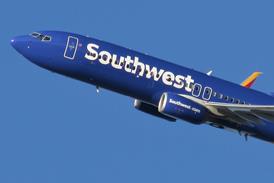Guy Norris/BOULDER

Ball Aerospace & Technologies is "gearing up" to propose a synthetic aperture radar to NASA for a free-flying remote sensing satellite. This follows the success of its antennas on the Shuttle Radar Topography Mission (SRTM), which was completed on 22 February.
"We're starting to form a team at a low level," says Ball Aerospace SRTM programme manager Don Figgins, whose team produced the antennas used in the SRTM to collect data on over 80% of the Earth's landmass for the National Image and Mapping Agency. The US agency plans to use the three-dimensional information to create the most accurate and complete topographic map of the Earth.
The free flying lightweight synthetic aperture radar (LightSAR) proposal will be a revised and improved version of a concept that was passed over for funding last year by NASA in favour of the US-French PICASO (Pathfinder Instruments for Cloud and Aerosol Spaceborne Observations) programme. The new remote sensing platform would fly in a low Earth orbit collecting Earth science data on geology, geophysics and agriculture, and would be capable of limited movement outside its regular orbital track. "The difference is that the primary antenna would be larger than the outboard, the electronics would be newer with lower volume and reduced power requirements," says Figgins.
"We feel the SRTM will be a springboard to LightSAR and a few other potential [mostly classified US military spaceborne SAR] projects," he says. Ball designed the original Spaceborne Imaging Radar-C (SIR-C) antennas that were used to create maps on two previous Shuttle missions in 1994.
To generate the three-dimensional images with the SRTM mission, Ball supplied an additional, smaller, receiving antenna mounted on a 60m (200ft) telescoping mast. Although the Shuttle crew had difficulty in retracting the mast and stowing the sensor array, the mission was successful.
Source: Flight International























